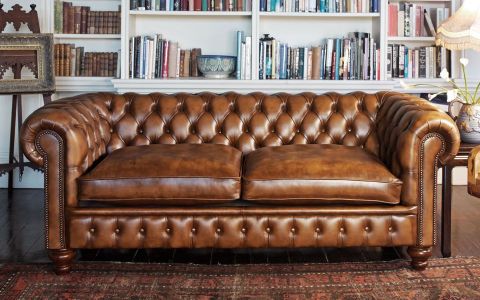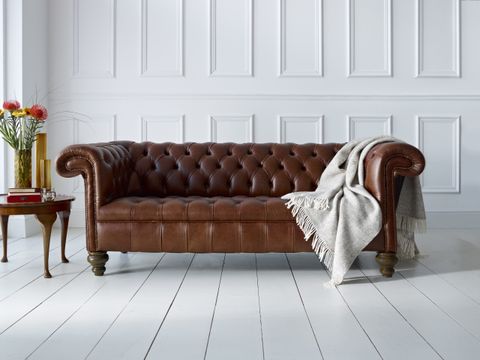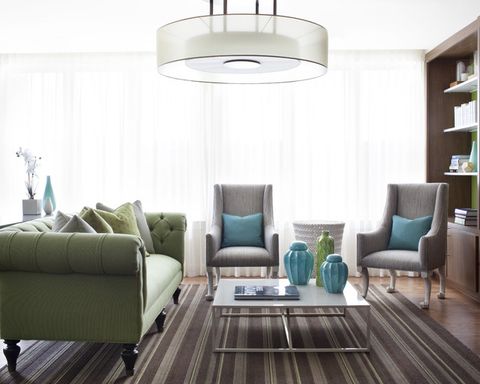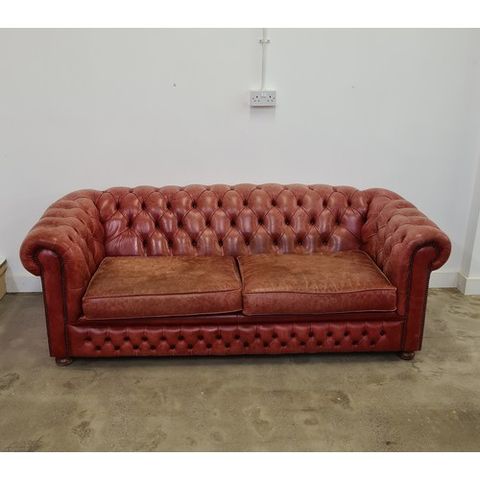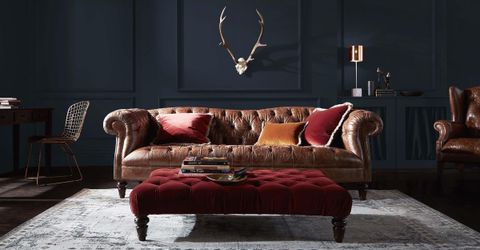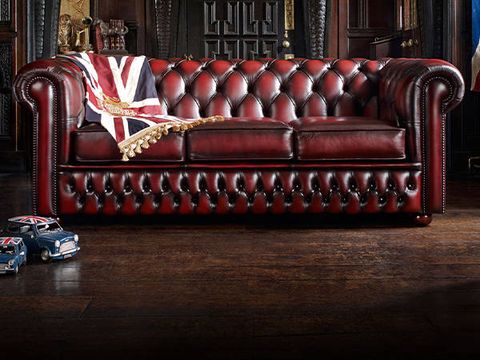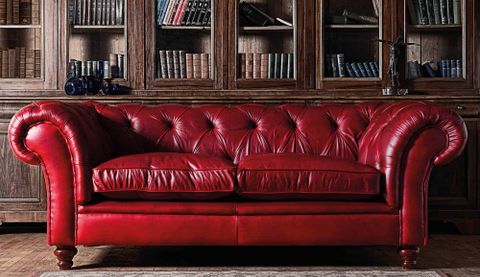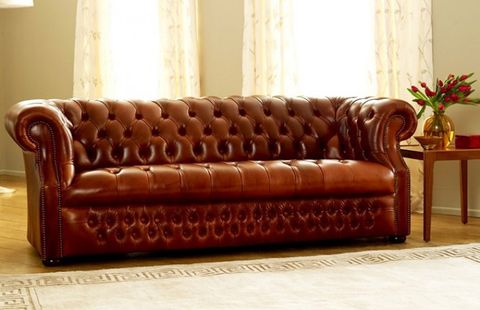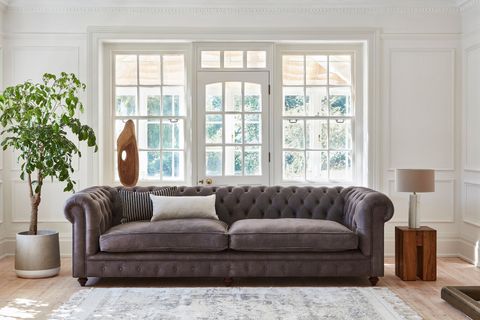Ah, the Chesterfield. Just hearing the name conjures images of stately libraries, cozy gentlemen’s clubs, and a certain kind of understated elegance that’s hard to pin down. But what is it about this particular piece of furniture that has allowed it to not only endure but thrive for centuries? It’s more than just a sofa; it’s a statement, a nod to history, and frankly, one of the most comfortable things you’ll ever plonk yourself down on. Let’s delve into its fascinating story, from its humble beginnings to its current status as a global design classic. It’s a journey, my friends, worth taking.
For anyone who’s ever had the pleasure of sinking into its deep, button-tufted embrace, the Chesterfield sofa isn’t just a piece of furniture; it’s an experience. It possesses a gravitas, a certain je ne sais quoi, that few other designs can boast. But how did this particular style, with its distinctive rolled arms, low back, and deep buttoning, come to be? And what makes it so enduringly popular, even in our ever-changing world of fleeting trends? We’re about to embark on a little historical detective work, piecing together the origins and evolution of a true furniture legend.
The Whispers of Its Birth: Early Origins and Noble Connections
The exact genesis of the Chesterfield sofa is, for lack of a better word, a bit murky. Like many great innovations, its precise birth certificate is lost to the mists of time. However, the most widely accepted and charming tale attributes its creation to the 4th Earl of Chesterfield, Philip Stanhope, in the mid-18th century. Now, Lord Stanhope was a man of considerable influence and impeccable taste, known for his letters to his son offering advice on manners and etiquette. Legend has it he commissioned a piece of furniture that would allow gentlemen to sit upright in comfort, avoiding creasing their fine garments. Imagine, if you will, the discomfort of a stiff, straight-backed chair after a long day of politicking or philosophical discourse. The Earl, a man of practical elegance, sought a solution.
This early version, likely less grand than what we recognize today, was probably a more utilitarian piece, designed for comfort and good posture. It was about practicality as much as aesthetics. Think of it as the original ‘power seating.’ The design, with its deep buttoning, was revolutionary for its time, providing both support and a distinctive visual appeal. And so, a legend began to take shape, whispered from drawing-room to drawing-room. It’s a lovely story, even if a little hard to fully verify, and it certainly adds to the mystique of the piece.
Craftsmanship and Evolution: The Defining Characteristics Emerge
Over the centuries, the basic blueprint of the Chesterfield evolved, but its core characteristics remained remarkably consistent. This speaks volumes about the inherent brilliance of the initial design. What defines a true Chesterfield?
- Deep Button Tufting: This is perhaps the most iconic feature. The buttons are pulled deep into the upholstery, creating those distinctive pleats and folds that give the sofa its luxurious, sculptural quality. It’s not just for show; it also helps to hold the stuffing in place, ensuring the sofa retains its shape over time.
- Rolled Arms (Often Called ‘Scroll Arms’): These arms are typically the same height as the back, creating a continuous, elegant line. They roll outwards, providing a comfortable place to rest an arm or even a head for a quick nap.
- Low Back: Compared to many modern sofas, the Chesterfield’s back is relatively low. This was part of its original design ethos – allowing people to sit upright and engage in conversation without feeling swallowed by the furniture.
- Nailhead Trim: Many classic Chesterfields feature individual nailhead trim along the arm fronts and base, adding another layer of intricate detailing and craftsmanship.
- Rich Upholstery: Traditionally, Chesterfields were upholstered in fine leather, often in deep, rich tones like oxblood, forest green, or classic brown. This choice of material wasn’t just for luxury; leather is incredibly durable and develops a beautiful patin over time, telling its own story. However, today you’ll find them in a variety of fabrics too, from sumptuous velvet to durable linen.
The evolution wasn’t about radical change, but rather a refinement of these elements, perfecting the balance between form and function. Each stitch, each tuft, was a testament to the skill of the artisans who created these enduring pieces.
More Than Just a Sofa: A Symbol of Status and Comfort
From grand country estates to bustling gentlemen’s clubs, the Chesterfield quickly became a symbol of status, comfort, and refined taste. Its solid construction and luxurious materials meant it was an investment, a piece of furniture meant to last generations. Imagine a Victorian-era patriarch, pipe in hand, settled deep into his Chesterfield, discussing the affairs of the day. Or perhaps a group of intellectuals, debating philosophy and literature within its comforting confines.
It wasn’t just for the elite, though its origins were certainly aristocratic. As the Industrial Revolution progressed and a new middle class emerged, the desire for such symbols of comfort and stability grew. The Chesterfield represented a certain aspirational lifestyle, a tangible embodiment of success and good living. It was, and still is, a piece that commands attention and respect. You don’t just ‘sit’ on a Chesterfield; you ‘lounge’ or ‘recline’ in it. There’s a subtle but significant difference, wouldn’t you agree.
The Global Reach: From British Isles to Boardrooms Worldwide
The Chesterfield’s appeal wasn’t confined to the British Isles for long. Through colonial expansion and the global spread of British influence, its design traveled far and wide. It became a staple in embassies, libraries, and grand homes across the world, from India to America. Its robust construction meant it could withstand the rigors of travel and varied climates, further cementing its reputation for durability.
In the 20th century, as design trends swung wildly from Art Deco to Mid-Century Modern and beyond, the Chesterfield remained a steadfast presence. It proved its versatility by adapting to different interior styles. A classic leather Chesterfield can look equally at home in a traditional study, a minimalist loft, or even a quirky, eclectic living room. This adaptability is key to its enduring popularity. It’s a chameleon, albeit a very elegant one, that somehow manages to always look just right, no matter the surrounding decor. It’s truly a testament to its timeless design, proving that good design truly transcends fads.
Maintaining the Legacy: Care, Restoration, and Enduring Appeal
Owning a Chesterfield is not just about having a piece of furniture; it’s about being a custodian of history. These sofas, especially the older, genuine articles, are built to last. With proper care, they can easily become family heirlooms, passed down through generations.
- Leather Care: For leather Chesterfields, regular conditioning is crucial to prevent the leather from drying out and cracking. A good quality leather conditioner applied a few times a year will keep it supple and looking its best. Minor scuffs and scratches often add to the character and patina, telling the story of its life.
- Fabric Care: For fabric Chesterfields, regular vacuuming and spot cleaning are essential. Depending on the fabric, professional cleaning every few years can help maintain its appearance.
- Frame and Springs: A well-made Chesterfield has a solid hardwood frame. If springs become an issue, a professional upholsterer can usually replace or repair them, breathing new life into the sofa.
Many companies today still craft Chesterfields using traditional methods, ensuring the legacy of quality and craftsmanship continues. There are also many skilled restorers who specialize in bringing vintage Chesterfields back to their former glory, preserving their history and ensuring they can be enjoyed for many more decades. It’s a rewarding process, seeing a worn piece transformed, its stories still palpable. The appeal lies not just in its looks, but in its inherent quality and the warmth it brings to a space. It really is a joy to behold and sit upon.
The Chesterfield in Modern Design: A Timeless Statement
In today’s diverse design landscape, the Chesterfield continues to hold its own. It’s seen a resurgence in popularity, appearing in everything from chic boutique hotels to contemporary urban apartments. Designers appreciate its ability to anchor a room, providing a sense of gravitas and history without feeling stuffy.
Modern interpretations might play with materials, using bold colors, velvet, or even unexpected patterns, but the core silhouette remains. This adaptability is its secret weapon. It can be dressed up or down, made to feel grand or surprisingly casual, depending on the surrounding decor. It’s a testament to the fact that truly great design doesn’t follow trends; it sets them. The Chesterfield isn’t just a relic of the past; it’s a living, breathing piece of design history that continues to inspire and comfort in equal measure. It’s a statement piece that whispers tales of comfort and class across the centuries, and frankly, I don’t see it going out of style anytime soon. It’s a truly remarkable piece of furniture, a real gem in the world of interior design.
From the supposed commission of a discerning earl to its status as a global design icon, the Chesterfield sofa has certainly earned its place in the pantheon of furniture greatness. It’s a testament to the power of thoughtful design, quality craftsmanship, and timeless appeal. It’s more than just a place to sit; it’s a piece of history, a symbol of comfort, and a true work of art that continues to enrich homes and spaces around the world. Its story is one of enduring elegance, and its legacy, I believe, is secure for many centuries to come. So, next time you encounter a Chesterfield, take a moment to appreciate its rich history and the countless stories it could tell. It’s a true treasure. And maybe, just maybe, take a moment to sit down and experience its legendary comfort for yourself. You won’t regret it.

